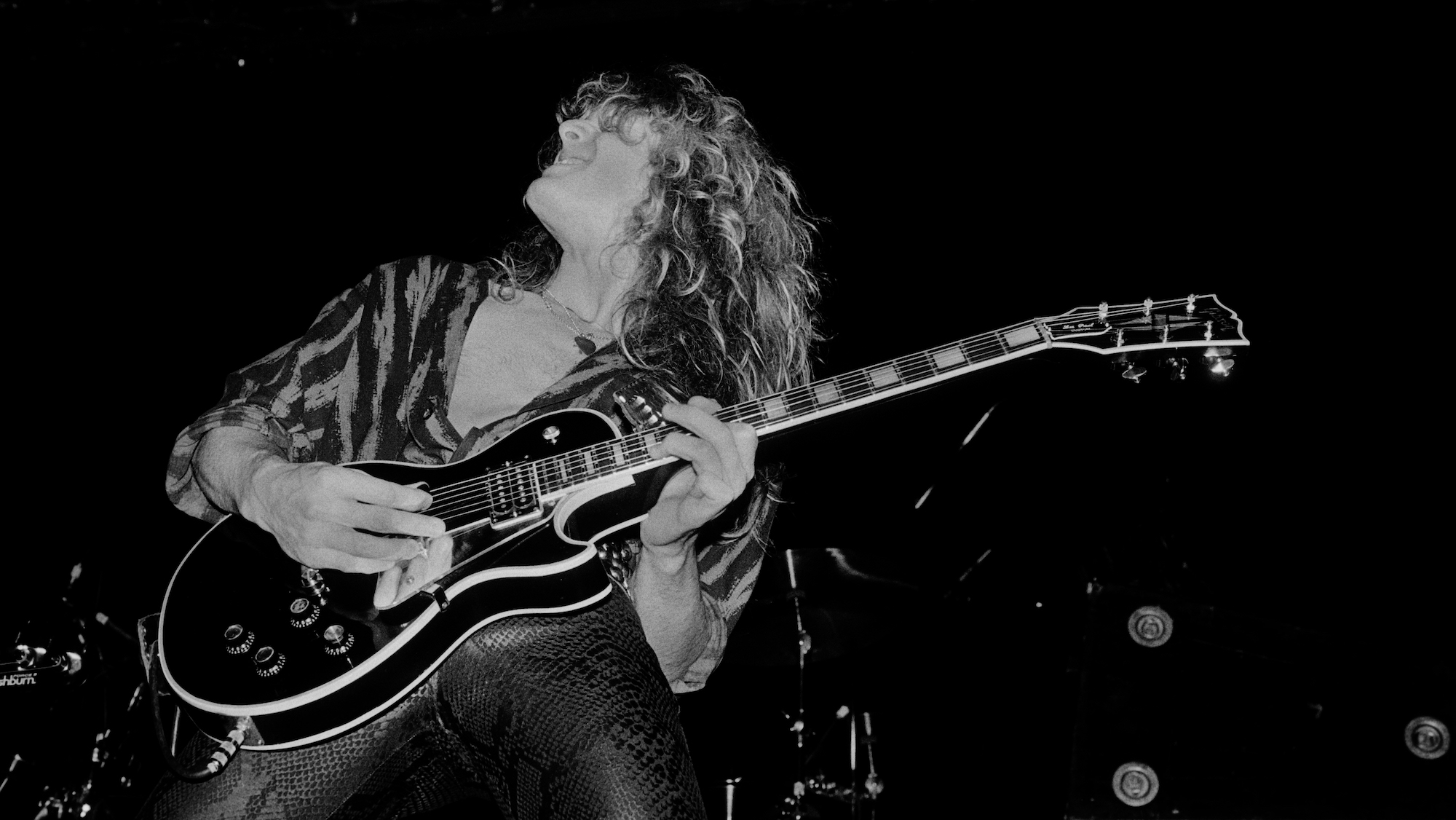
Speaking to Guitar World back in 1989, the late John Sykes – a guitar hero who lent his ferocious tone and songwriting chops to Whitesnake, Thin Lizzy, Blue Murder, and Tygers of Pan Tang – said he wasn't the world's biggest gear-head.
Though he didn't go all the way to the “they're just tools of the trade” end of things, he told GW that he didn't have much of an emotional attachment to any of his guitars. With one exception.
That exception was a black 1976 Gibson Les Paul, which Sykes – he told us at the time – had used for every gig he'd played with Whitesnake and Thin Lizzy before them.
Such was his bond with the guitar that it was the subject of his first thought after a terrifying near-death experience.
At some time during the mid-'80s, Sykes was involved in a terrible car crash, in which his vehicle was broadsided by a truck.
Luckily, the guitarist survived the initial impact, but his totaled car was soon engulfed in flames. In a further stroke of luck, fast-acting first responders were able to pull Sykes unconscious from the driver's-side window.
Soon after, though, Sykes came to. Seeing his car in flames, he had only one thought – his beloved Les Paul in the back seat.
Sykes attempted to run back to his car, much to the displeasure of one of the on-site first responders, who had to restrain the guitarist from sprinting back to the scene of the accident.
Fortunately, though, firefighters were able to extinguish the blaze before it swallowed the guitar.
“I was in a frantic frenzy about my guitar being trapped and burnt up,” Sykes explained to Guitar World. “I knew I'd never be able to replace it.
“It's amazing, the feelings you get about these things. It's like a child. You've done so much with it and you know just how to get what you want from it.”

That's a hell of a comparison. So, what exactly was so magical about this particular Les Paul?
“I have maybe 30 other guitars, but they don't mean that much to me,” Sykes told Guitar World. “But this one... I don't know what it is. It's clear, it's sweet, it's got a good sustain. I don't like guitars that sound scratchy and messy.”
Modded only with a thick brass nut for peghead harmonics, and a Dirty Fingers pickup at the neck – the bridge remained stock – for more bite, the black '76 model stood out even over other Les Pauls to which Sykes made the same tweaks.
I've tried different configurations of guitars and pickups and the same pickups, but none of them sounds like this one
“I've tried different configurations of guitars and pickups and the same pickups, but none of them sounds like this one,” he explained. “Sometimes you just get a dead guitar.
“I got a '67 Les Paul Custom like this and it didn't matter what I did to it. The wood was dead as a doornail.”
Interestingly, Sykes even made a point of highlighting how his #1 six-string took away an obvious target of blame for a bad show.
“If it's not happening at a gig, you know it's not the guitar, it's just you having an off night,” he explained. “These feelings aren't good because if something did happen to it, it would be devastating.”







